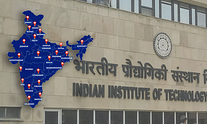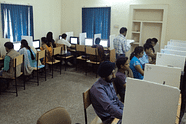The World Bank has released the Human Capital Index report according to which girls in India are far better in education than boys. The report takes into account different criteria such as Expected Years of School, Harmonised Test Scores and Learning Adjusted Years of School.

World Bank has released the Human Capital Index Report which indicates that the education quality of children in a country and is based on three main indicators. These three indicators are Expected Years of School, Learning-Adjusted Years of School and Harmonized Test Scores.
The above-mentioned parameters primarily focus on school education as the agenda of formulating the Human Capital Index Report is to find out if health care and education prepare students to lead a successful and prosperous life as adults.
Below you can find elaborated details of each of the parameters of the Human Capital Index Report:
Expected Years of School - It is the number of years a child spends/attains in a school environment until he/she reaches their 18th birthday. Children usually begin preschool at the age of 4 but the enrollment rate depends upon the country where they live in. The maximum number of years a child spends in school can, therefore, be 14 years. The worldwide average of expected years of school is 11.2 whereas in South Asia it is 10.5 years.
With respect to India, the expected years of school is 10.2. Further, considering the gender aspect, boys spend an average of 10.1 years while for girls it is higher at 10.3 years.
Also Read: Highlights of All India Survey of Higher Education (AISHE) Report 2017-18
Harmonized Test Scores - These test scores combine the data from the major international student achievement testing events into common units. The minimum attainment is 300 and 625 is the advanced one. The world average score in this category is 431 while for South Asia it is 364.
The score, which India has attained in this aspect is 355, that is just above the minimum standard and definitely lower than the South Asia average. Further, girls have scored better at 362 as compared to boys for whom the score is 347.
Learning Adjusted Years of School -This criterion measures the time spent in school and the level of learning children achieve. This figure is calculated by multiplying the Expected Years of School by Harmonized Test Scores as a fraction of the advanced attainment benchmark/top score of 625. For this criteria, the world average is 7.9 while the average of South Asia is 6.2.
India has a score of 5.8 in this category. Further, for boys, it is 5.6 and for girls, it is 5.9.
Also Read: MBA Graduates to Get More Jobs in 2018: GMAC Corporate Recruiters Survey Report
These parameters clearly depict that India needs to work more to meet the average scores of South Asia.


 Follow us
Follow us














